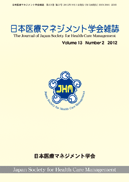Volume 10, Issue 4
Displaying 1-7 of 7 articles from this issue
- |<
- <
- 1
- >
- >|
Original Articles
-
2010Volume 10Issue 4 Pages 563-569
Published: March 01, 2010
Released on J-STAGE: September 25, 2017
Download PDF (769K) -
2010Volume 10Issue 4 Pages 570-574
Published: March 01, 2010
Released on J-STAGE: September 25, 2017
Download PDF (716K) -
2010Volume 10Issue 4 Pages 575-582
Published: March 01, 2010
Released on J-STAGE: September 25, 2017
Download PDF (443K) -
2010Volume 10Issue 4 Pages 583-588
Published: March 01, 2010
Released on J-STAGE: September 25, 2017
Download PDF (1100K)
Case Reports
-
2010Volume 10Issue 4 Pages 589-592
Published: March 01, 2010
Released on J-STAGE: September 25, 2017
Download PDF (1050K) -
2010Volume 10Issue 4 Pages 593-599
Published: March 01, 2010
Released on J-STAGE: September 25, 2017
Download PDF (1763K)
Introductory Reports
-
2010Volume 10Issue 4 Pages 600-603
Published: March 01, 2010
Released on J-STAGE: September 25, 2017
Download PDF (788K)
- |<
- <
- 1
- >
- >|
